45 understanding fat on nutrition labels
How to Understand and Use the Nutrition Facts Label | FDA Feb 25, 2022 · Note: some nutrients on the Nutrition Facts label, like total sugars and trans fat, do not have a %DV – they will be discussed later. General Guide to %DV 5% DV or less of a nutrient per serving ... Nutrition Education - Action for Healthy Kids Nutrition education is especially important for kids, as they establish food patterns that carry into adulthood. ... increasing their understanding and appreciation for diversity. ... Switch to fat-free or low-fat (1%) dairy. Consume 3 servings of dairy each day. Limit soda and other sugar sweetened beverages. Water is the best option!
› en › healthy-livingUnderstanding Food Nutrition Labels | American Heart Association Mar 06, 2017 · When the Nutrition Facts label says a food contains “0 g” of trans fat, but includes “partially hydrogenated oil” in the ingredient list, it means the food contains some trans fat, but less than 0.5 grams per serving. So, if you eat more than one serving, you could end up eating too much trans fat.

Understanding fat on nutrition labels
Types of Carbohydrates | ADA - American Diabetes Association Nuts — try different kinds. Peanuts, walnuts and almonds are a good source of fiber and healthy fat, but watch portion sizes, because they also contain a lot of calories in a small amount. In general, an excellent source of fiber contains five grams or more per serving, while a good source of fiber contains 2.5–4.9 grams per serving. › nutritionsource › food-labelUnderstanding Food Labels | The Nutrition Source | Harvard T ... All FOP labels in the U.S. are voluntary, which allows food manufacturers to highlight or hide the nutrition information they choose to help promote or preserve sales. If warning labels became mandatory, as public health advocates propose, the pressure on manufacturers would increase to change certain products to improve their nutritional quality. 20 Tips for Understanding Nutrition Labels | Eat This Not That Keep it Short. Shutterstock. We're talking about ingredients! Keeping the length of an ingredient list to as short as possible will usually make it less likely that you're eating nasty additives. Again, this tip is just a general guide, as some snack bars or nut mixes will contain many good-for-you ingredients. 5.
Understanding fat on nutrition labels. Understanding Ingredients on Food Labels | American Heart Association Mar 06, 2017 · Food labels are an important source of information about calories and the nutritional value of the foods you eat, a crucial tool in building a heart-healthy diet. Food labels are an important source of information about calories and the nutritional value of the. ... Understanding Food Nutrition Labels Understanding Ingredients on Food Labels ... Food label: ingredient list - Canada.ca Understanding food labels. Nutrition facts tables; Serving size; Food label: ingredient list; Nutrition claims; Nutrient content claims: what they mean; Percent daily value; About food labels; Calories; Health claims: what they mean; Understanding food labels - Interactive tools; Nutrition Labelling Online Course Understanding Food Nutrition Labels - American Heart Association When the Nutrition Facts label says a food contains "0 g" of trans fat, but includes "partially hydrogenated oil" in the ingredient list, it means the food contains some trans fat, but less than 0.5 grams per serving. So, if you eat more than one serving, you could end up eating too much trans fat. Understanding Nutrition Fact Labels | Penn Highlands Healthcare Understanding Nutrition Fact Labels. One of the best ways to take greater control of your health is by better understanding what you eat and drink in a day. Fortunately, the Nutrition Fact labels on nearly everything we buy gives us this exact information. ... Too much saturated fat and sodium are associated with an increased risk for ...
How to read food labels: MedlinePlus Medical Encyclopedia Check the total fat in 1 serving. Pay special attention to the amount of saturated fat in 1 serving. Choose foods that are low in saturated fat. For example, drink skim or 1% milk instead of 2% or whole milk. Skim milk has only a trace of saturated fat. Whole milk has 5 grams of this fat per serving. Fish is much lower in saturated fat than beef. Understanding and Using the Nutrition Facts Label fat-free or 1% low-fat dairy products, eggs, lean meats packaged foods, snacks, and condiments. Limit baked and poultry, seafood, soy products, nuts, and seeds. Food Labels | CDC - Centers for Disease Control and Prevention Sep 20, 2022 · Understanding the Nutrition Facts label on food items can help you make healthier choices. The label breaks down the amount of calories, carbs, fat, fiber, protein, and vitamins per serving of the food, making it easier to compare the nutrition of similar products. Be sure to look at different ... The Basics of the Nutrition Facts Label - Academy of Nutrition … Mar 04, 2022 · Low is 5% or less. Aim low in saturated fat, trans fat, cholesterol and sodium. High is 20% or more. Aim high in vitamins, minerals and dietary fiber. Step 4: Check Out the Nutrition Terms. Low calorie: 40 calories or less per serving. Low cholesterol: 20 milligrams or less and 2 grams or less of saturated fat per serving.
Dietary Recommendations for Healthy Children - American Heart Association Apr 16, 2018 · If 1%, 2%, or whole-fat milk is substituted, this will utilize, for each cup, 19, 39, or 63 kilocalorie of discretionary calories and add 2.6, 5.1, or 9.0 grams of total fat, of which 1.3, 2.6, or 4.6 grams are saturated fat. ... Understanding Food Nutrition Labels Understanding Ingredients on Food Labels ... How to Understand and Use the Nutrition Facts Label | FDA Nutrients to get less of: Saturated Fat, Sodium, and Added Sugars. Saturated fat, sodium, and added sugars are nutrients listed on the label that may be associated with adverse health effects - and... Food Labels: Fat & Cholesterol | Home & Garden Information Center The 2015 Dietary Guidelines for Americans recommends the following intakes of fat and cholesterol every day: total fat—20 to 35% of calories, depending on age and gender (65 grams for the 2,000-calorie intake level used in the Daily Value)*. saturated fat—less than 10% of calories**. trans fat— keep as low as possible. Understanding the Nutrition Facts Label - Know Diabetes by Heart Fats Although fat can also contribute to changes in your blood sugar, they have less influence than carbs. However, it is important to reduce amount of saturated and trans fats as a part of a balanced diet. Replacing foods that are high in saturated fat with healthier options can lower blood cholesterol levels and improve lipid profiles. Sodium
Understanding the New Nutrition Facts Label | University of Utah Health ... Fats Labels are no longer required to list the percentage of calories from fat. This is due to the fact that it is now understood that the type of fat consumed is more impactful on health than the amount of total fat consumed. Labels will still list "total fat," "saturated fat" and "trans fat" amounts.
Understanding Nutrition Labels - Facty Health Understanding Nutrition Labels. Food manufacturing companies in the U.S. are required by law to label all food products. They are legally required to provide information about calories, fat, sugar, salt, and nutritional values so that consumers can make informed decisions about their purchases. A lot of this information can feel alien, though ...
diabetes.org › healthy-living › recipes-nutritionCarb Counting and Diabetes | ADA Carbohydrates, or carbs, are naturally found in certain foods. For example, grains, sweets, starches, legumes and dairy all contain different amounts of carbs. Get up to speed on the three types of carbs, and what foods have them. When foods and drinks with carbs are digested, the carbs break down ...
Understanding Nutrition Labels and Information - Teladoc Health, Inc. Here is a guide to understanding what those nutritional claims mean: Low Calorie: Less than 40 calories per serving. Calorie Free: Less than 5 calories per serving. Fat-Free: Less than 0.5 grams of fat per serving. Sugar-Free: Less than 0.5 grams of sugar per serving. High Fiber: 5 grams or more of fiber per serving.
Tips for understanding the Nutrition Facts Labels Limit fats in your diet to 5%-20% DV for individual food items Aim to have 100% of the % DV of fiber, vitamins, and minerals in your diet—checking labels for the % DV in individual foods can help you achieve that goal Read the label before you eat the food The bottom line The following chart of Percent Daily Values is based on a 2,000-calorie diet.
diabetes.org › healthy-living › recipes-nutritionGet Smart On Carbs | ADA - American Diabetes Association As you’ll see on the nutrition labels for the food you buy, the term “total carbohydrate” refers to all three of these types. The goal is to choose carbs that are nutrient-dense, which means they are rich in fiber, vitamins and minerals, and low in added sugars, sodium and unhealthy fats.
Understanding Food Nutrition Labels | Sanford Fit Nutritional Information When looking at fat, carbohydrates, sodium, added sugar, and vitamins, the percent Daily Value (%DV) is a good guide. The percent Daily Value (%DV) will show how much of a nutrient is in a serving of food and contributes to a total daily diet. A general guide: 5% DV or less of a nutrient per serving is considered low.
Understanding Nutrition Facts on Food Labels - WebMD Serving Size: An Important Part of Food Labels. At the top of the Nutrition Facts section, you'll see the serving size (such as 1/2 cup, five crackers, or 10 chips) and servings per container (such as two, four, six). The food label then lists the number of calories, grams of fat, grams of saturated and trans fat, etc., per serving.
Learn How the Nutrition Facts Label Can Help You Improve Your Health Calories & Fat Larger, darker letters make calories the easiest item to see. When it comes to health outcomes, the type of fat you eat matters more than the overall amount of fat. For this reason, the label shows percentages of calories from unhealthy saturated and trans fats rather than the percentage of calories from all fat. Added Sugars
› food › food-labeling-nutritionChanges to the Nutrition Facts Label | FDA - U.S. Food and ... Mar 07, 2022 · Spanish (Español) The Nutrition Facts label on packaged foods was updated in 2016 to reflect updated scientific information, including information about the link between diet and chronic diseases ...
Understanding Fat Content on Nutrition Labels For most foods that contain fat you'll see Total Fat content and Saturated, Trans Fat, Polyunsaturated, and Monounsaturated fats listed below that. ... Understanding Fat Content on Nutrition Labels [closed] Ask Question Asked 10 years, 5 months ago. Modified 10 years, 5 months ago. Viewed 133 times 1 Closed. This question is ...
Understanding Nutrition Labels: LabelCalc Using Online Nutrition Analysis Software to Create Your Nutrition Label While it is certainly important to understand nutrition labels, it's not worth stressing over every little detail. With FDA-compliant online nutrition analysis software, you really only need to enter your recipe using the software's database and serving size , then the ...
Food Labels | CDC - Centers for Disease Control and Prevention Understanding the Nutrition Facts label on food items can help you make healthier choices. The label breaks down the amount of calories, carbs, fat, fiber, protein, and vitamins per serving of the food, making it easier to compare the nutrition of similar products. Be sure to look at different brands of the same foods—nutrition information ...
Knowledge, Attitudes and Understanding of Low-fat Nutrition Labels ... Table 7: Understanding of Low-fat Nutrition Labels among Participants (n=111) With regards to assessing the relationship between low-fat food products and its caloric content, it can be noted from Table 7 that 48.6% of the participants had perceived that low-fat products have fewer calories, while 51.3% (Male: 18.9%; Female: 32.4%) of the ...
School Nutrition Online Learning Library | Wisconsin Department … Learn about the grain component for breakfast and lunch in this self-guided e-learning course. Understand how to identify a whole grain-rich product, grain-based dessert, and credit grains using different methods (Exhibit A, CN labels, Product Formulation Statements, and standardized recipes). 15 mins: December 2021: PS: Nutrition 1110. GOALS ...
› food-information › labellingSFA | Understanding Food & Nutrition Labels Low Fat. The requirements for nutrition claim like "low fat" are made to cater for the local dietary intake pattern. Food products which carry this claim shall comply with the requirement as stated under our national nutrient claims guidelines found in the "Handbook on Nutrition Labelling" (published by Singapore's Health Promotion Board), if they are meant for sale in Singapore.
› en › healthy-livingUnderstanding Ingredients on Food Labels | American Heart ... Mar 06, 2017 · Understanding Ingredients on Food Labels Food labels are an important source of information about calories and the nutritional value of the foods you eat, a crucial tool in building a heart-healthy diet.
Understanding Food Labels | The Nutrition Source | Harvard … All FOP labels in the U.S. are voluntary, which allows food manufacturers to highlight or hide the nutrition information they choose to help promote or preserve sales. If warning labels became mandatory, as public health advocates propose, the pressure on manufacturers would increase to change certain products to improve their nutritional quality.
20 Tips for Understanding Nutrition Labels | Eat This Not That Keep it Short. Shutterstock. We're talking about ingredients! Keeping the length of an ingredient list to as short as possible will usually make it less likely that you're eating nasty additives. Again, this tip is just a general guide, as some snack bars or nut mixes will contain many good-for-you ingredients. 5.
› nutritionsource › food-labelUnderstanding Food Labels | The Nutrition Source | Harvard T ... All FOP labels in the U.S. are voluntary, which allows food manufacturers to highlight or hide the nutrition information they choose to help promote or preserve sales. If warning labels became mandatory, as public health advocates propose, the pressure on manufacturers would increase to change certain products to improve their nutritional quality.
Types of Carbohydrates | ADA - American Diabetes Association Nuts — try different kinds. Peanuts, walnuts and almonds are a good source of fiber and healthy fat, but watch portion sizes, because they also contain a lot of calories in a small amount. In general, an excellent source of fiber contains five grams or more per serving, while a good source of fiber contains 2.5–4.9 grams per serving.
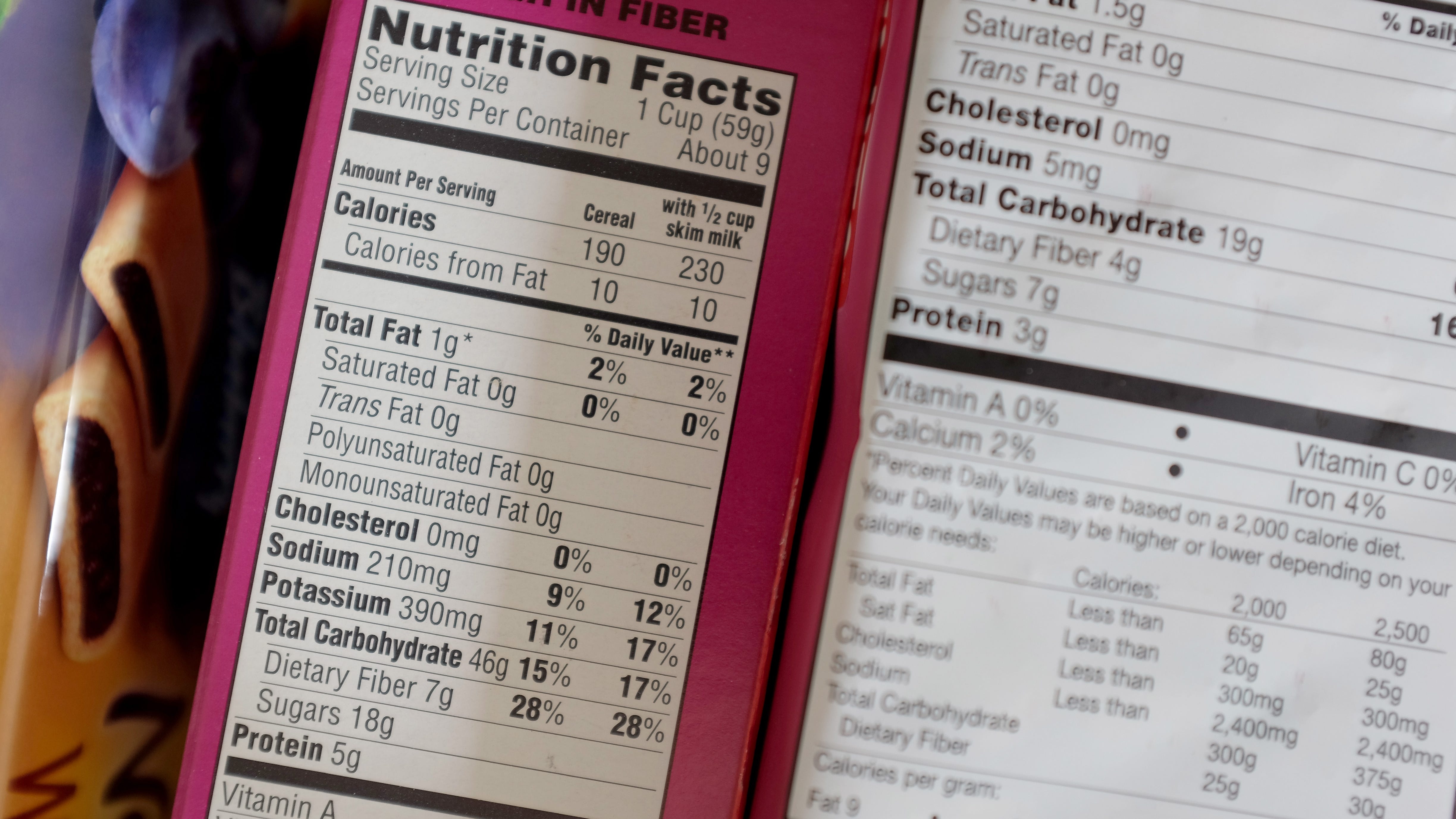


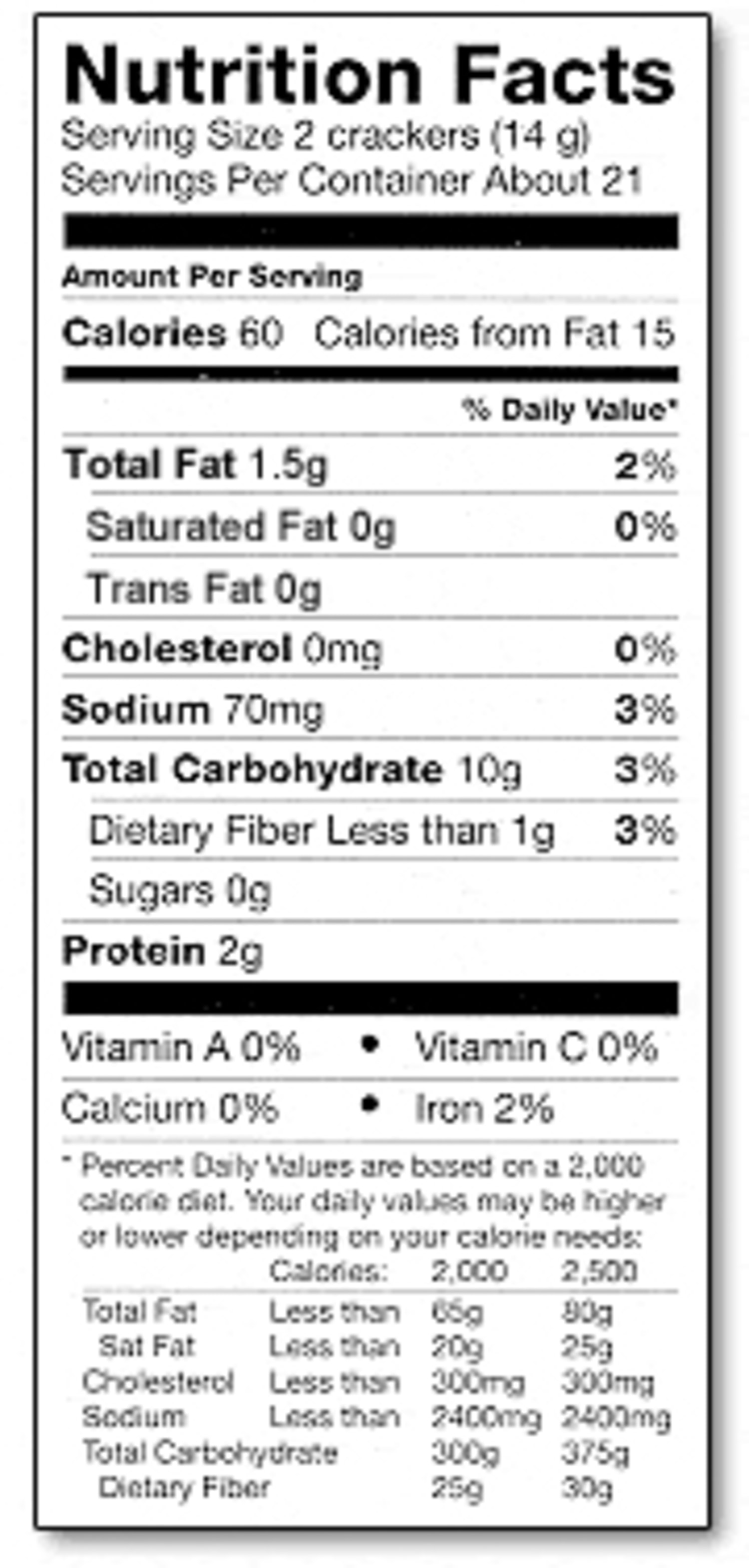
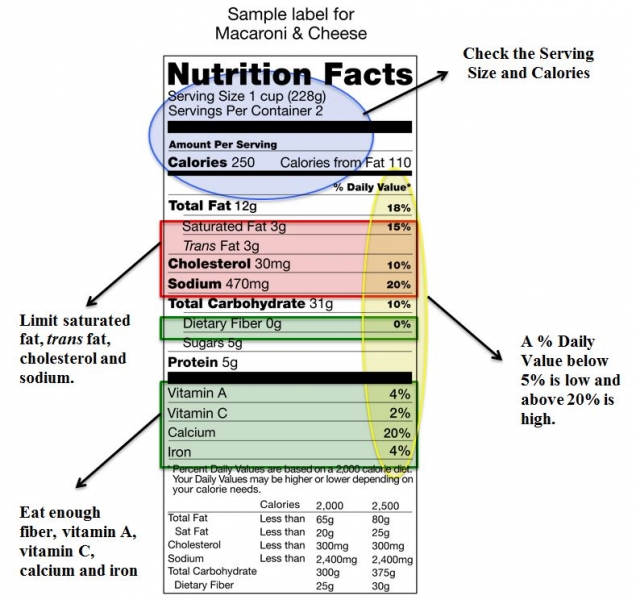
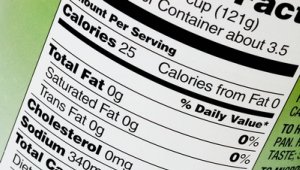
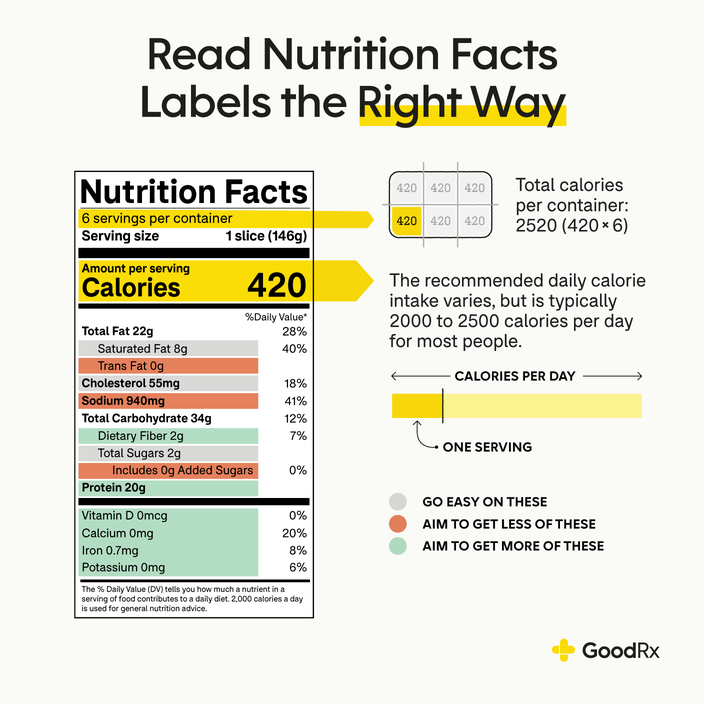


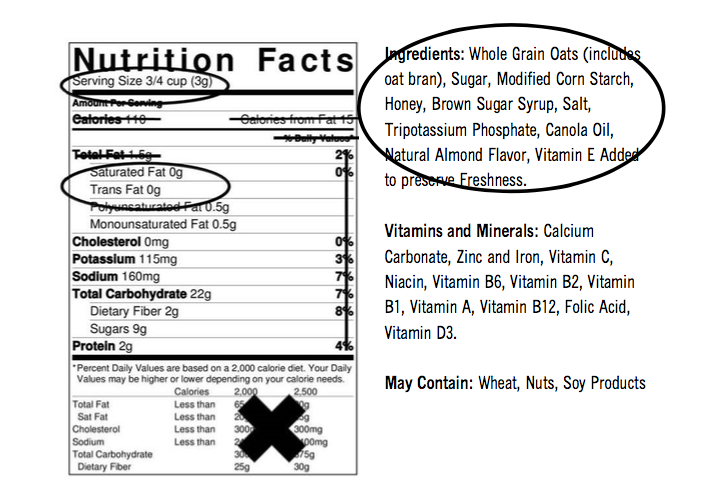
/Untitled-design-1--5755c3703df78c9b46903dab.jpg)




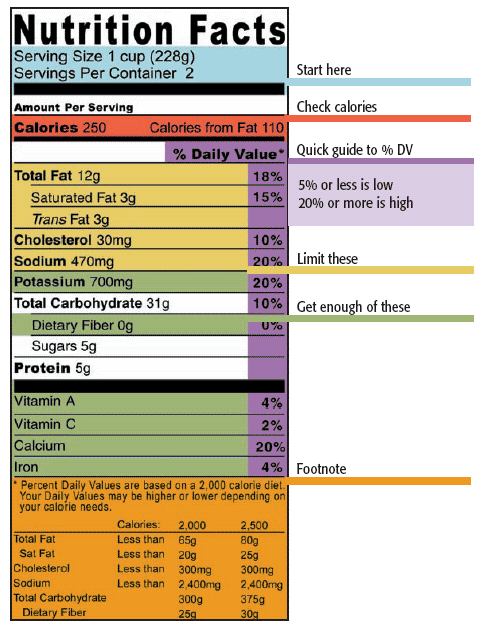
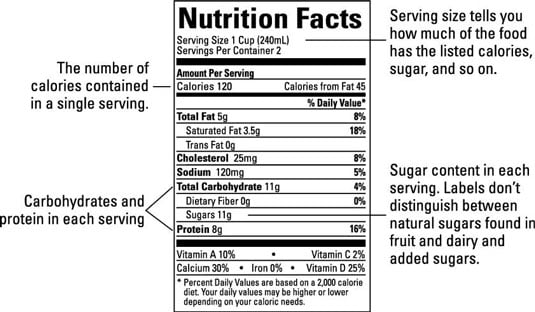


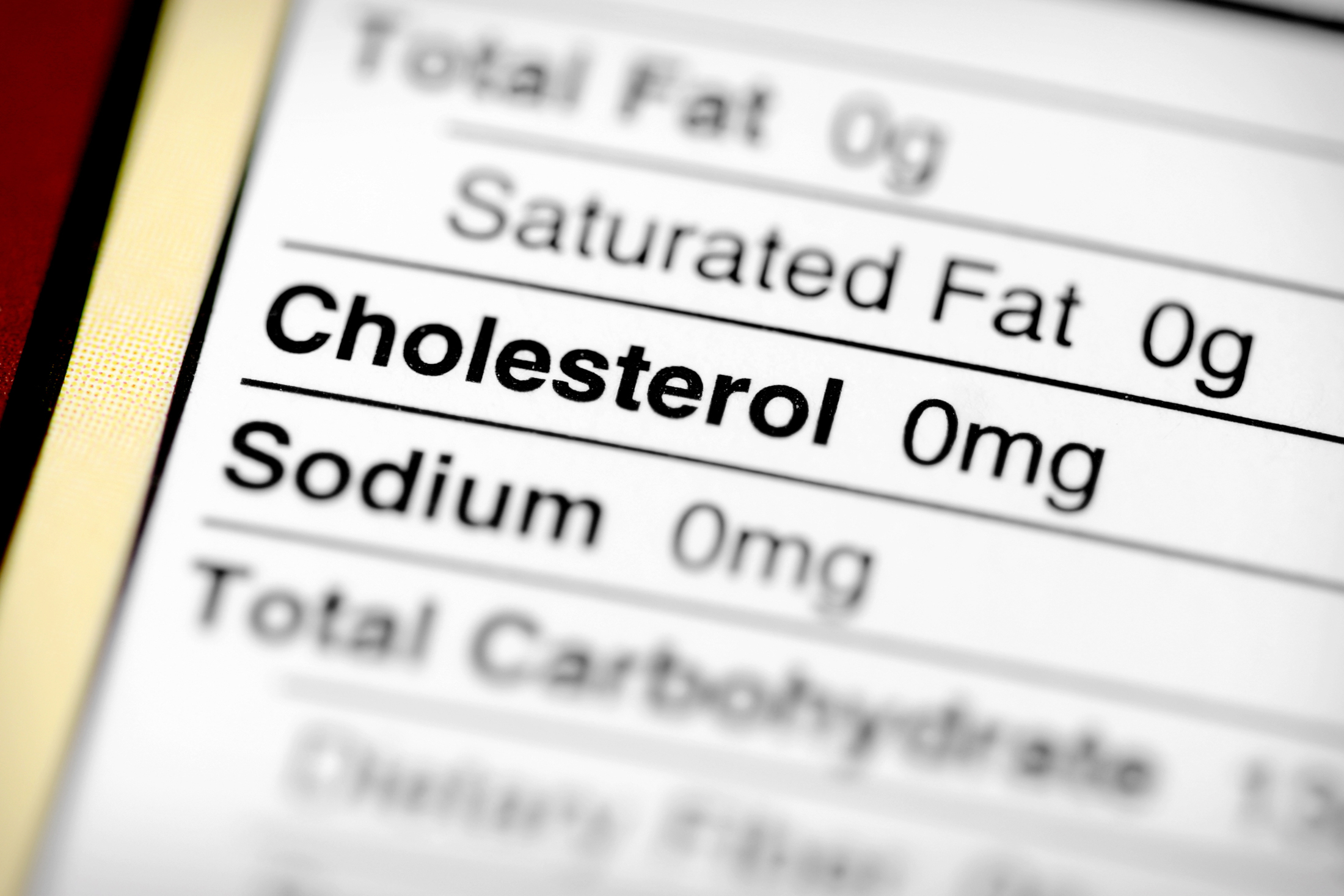

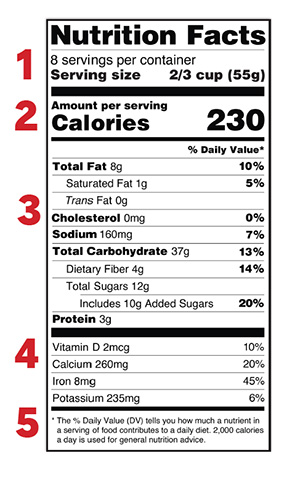
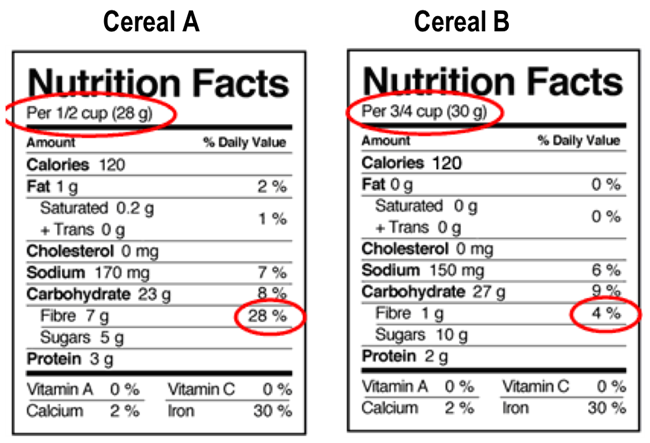

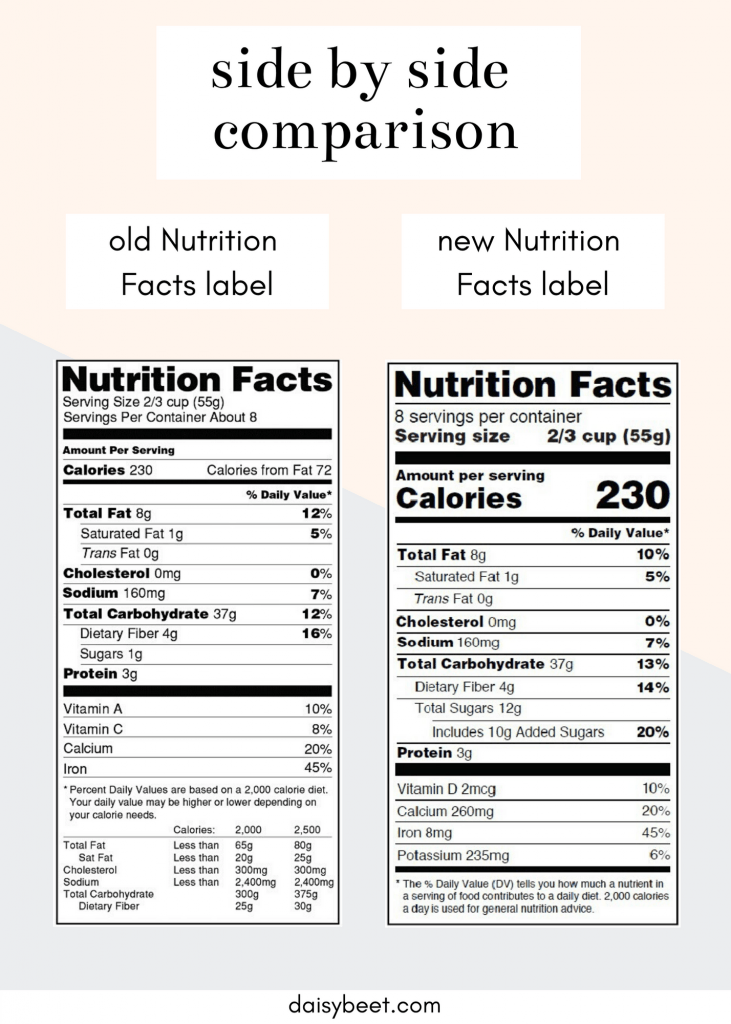
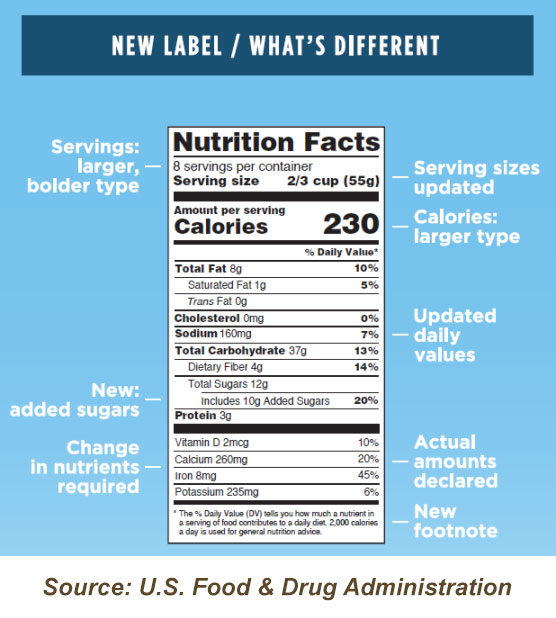




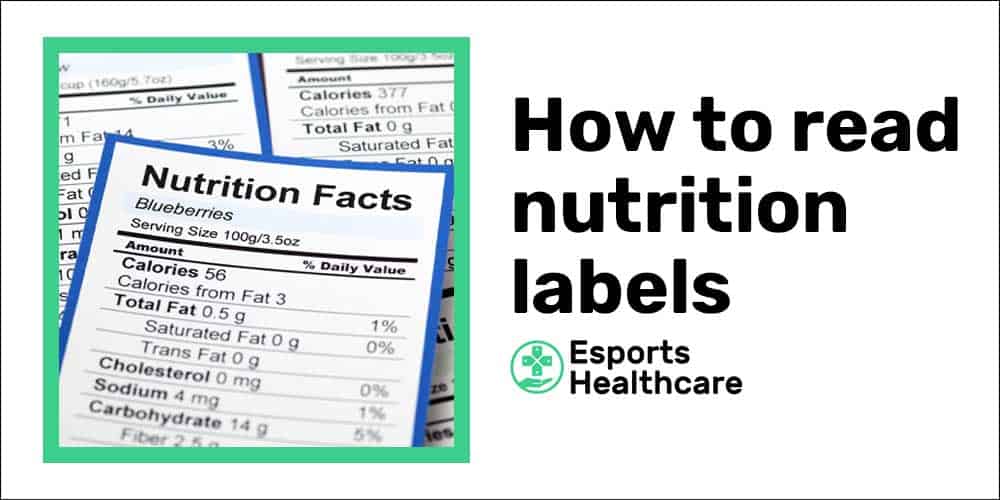
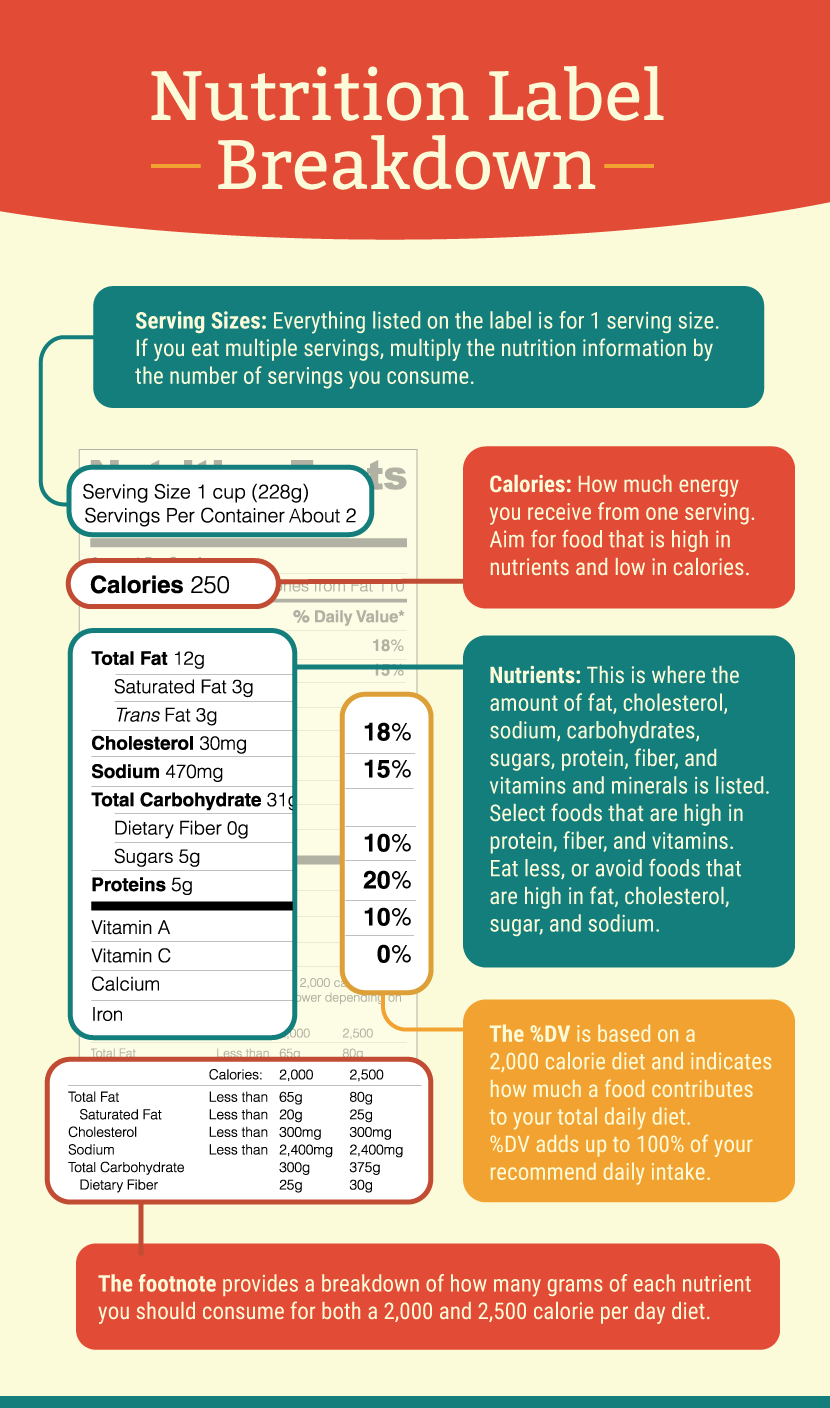



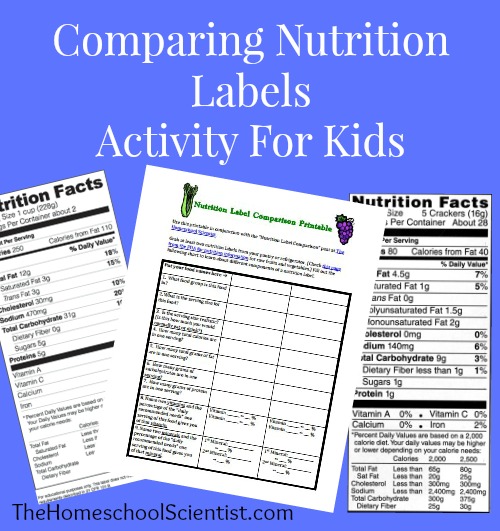

:max_bytes(150000):strip_icc()/Untitled-design-2--57535bc15f9b5892e8c65c9c.jpg)
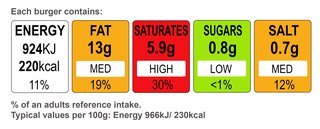
Post a Comment for "45 understanding fat on nutrition labels"